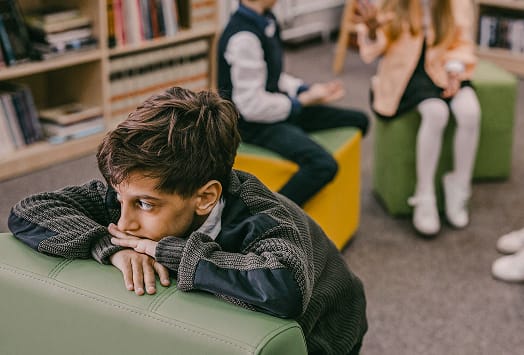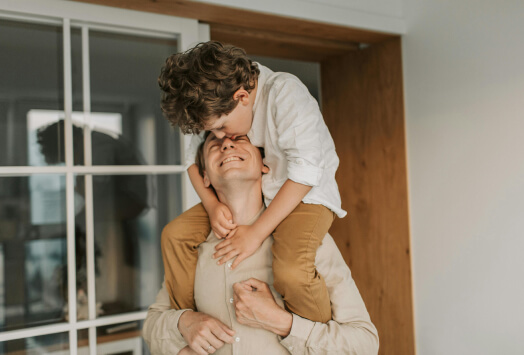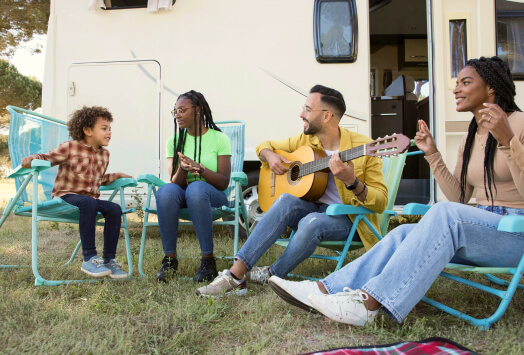Many parents of young children recognize the importance of independent play in developing their child’s creativity and imagination. There is also a lot of research on how unstructured independent play strengthens a child’s resilience, self-regulation, and problem-solving skills thus preparing and equipping them for school. And of course, there’s the added (and not forgotten) benefit of parents getting a moment to themselves at home to do simple things like laundry, work emails, cooking, etc. As a parent you may understand these benefits but simply aren’t sure how to get independent play going at home.
We spoke with our early childhood learning specialist, Emily Andrews, on how to get independent play rolling at home so you can get some things done.
1. Think: What does your child like?
Start by thinking about your unique child. They are an individual with interests, temperament, and dislikes. They are intrinsically drawn to certain things already and you have probably noted what those are. As your starting point, step back and think about those things, those quirks, those little passions. What does your child do automatically?
People hear the term “independent play” and their minds go straight to things they’ve seen online or on Instagram. Perhaps they associate the concept of play with one particular type of play material, maybe its wooden blocks, maybe it’s the LEGO bin of their own childhood.
If you would like to initiate an independent play routine, it’s not time to get your child to begin enjoying something totally new. Go with what they love. Think about who your child is and what they already like to play. Then extend that activity, grow it, scaffold it, run with it. If your child is a huge builder and tinkerer, it doesn’t make much sense to start out your independent play journey with baby dolls or a play kitchen.
2. Remember: They want to be with you
A lot of parents report that they set up amazing playroom activities for their child but their child always ends up back in the kitchen nagging them, saying they are bored or one of the many other of the many excuses.
Want to know a little secret? This is often because your child just wants to be near you. This doesn’t mean you have to play with them 24/7. Simply set up play stations or little play areas in the places where you are. Maybe one in your bedroom, one in the kitchen, or one in your office. By putting play near you, your child will feel more secure and thus more willing to settle down into some exploration.

3. Consider: Thoughtful storage
When it comes to play materials it’s not necessarily less is more although there is some truth to that sentiment. However, the more pertinent thing to bear in mind is to have the play area organized and appealing.
This doesn’t mean you need to go and spend a ton of money at The Container Store on aesthetic storage baskets. It simply means you need to take a critical look at a given play area and ask yourself these questions:
- Is there too much here?
- Is there enough to create with here?
- Does this look appealing to play with?
- What storage solutions do I have already that I can utilize in this play area to make the area more appealing? (clear jars, baskets, shoe bins, small shelves, low lights, a little rug, little jars of props, etc)
- Will my child play here independently if it's always available? Is there a way I can have some things out of reach that only get taken out for independent play?
Spend less money on toys and more money on toy storage. Presentation helps as does rotating toys. When a toy seems to have gotten stale or when your child tires of it, put it up high, out of sight for a few months. Toy storage isn’t just baskets at their eye level, it also means closet or cabinet space out of sight where you can hide things away. Then, when you take those items out after a time, they will feel fresh and new all over again.
4. Lean into: Open ended materials with layers
What are open ended play materials? What does that even mean? Open-ended play materials are play items or materials that can be used in many different ways, without rules, instructions, beginnings/ends, or intended products. They will hold your child’s attention longer and better. Examples of open-ended play materials include:
- Building blocks
- Magnetic tiles
- LEGO bricks (without instructions)
- Play dough
- Markers/crayons and plain paper
- Animals or figurines, stacking cups
- Anything in bulk like a collection of sea shells or plastic bottle caps in assorted colors, a basket of scarves, etc.
If you take some of those open-ended play materials and you layer in, either items of interest or sensory play items you will surely keep your child engaged. So, some examples would be using blocks with Pokémon figurines or plastic horses with playdough and rolling pins. Children can create whatever their imagination allows and explore the materials differently each time depending on what things are paired together.
5. Determine: The challenge level sweet spot
It is important to consider the challenge level of the materials you put out. A young three-year-old with limited exposure to magnetic tiles might not stay with them for long, especially independently, as they are still figuring out what they can do with them. However, if you stick 6-8 Magna tiles in a large bin filled with moon sand and lion figurines you will likely keep them engaged longer as the focus shifts away from building to imaginative play and sensory exploration, while still allowing the child to explore this relatively new building material. Conversely, if you are wanting your eight-year-old to keep busy on their own, just handing them a big ol’ bucket of Magna tiles won’t feel inspiring as the challenge level feels a bit “been there done that”. You’d do better to give them a book of Magna tiles structures to try to create or challenge them to build a marble run or a safe enclosure for a family pet.

6. Decide: To sibling or not to sibling?
When creating a play area in your home, factor in the multiple ages and/or developmental abilities of your children, if both/all of them will be enjoying the area. If you think what would be most enticing to your child would be to have their very own area, for their exclusive use, then give that a whirl. If that’s going to cause drama, obviously don’t do it. Use your best judgement but do consider who an area is for and be explicit. “I created this play area and it will be open for one week. It is for you two to play in together. The blocks and materials are all to be shared. The only time this area is going to be limited to one child at a time is when I’m on a work call and can’t help with problem solving.”
7. Don’t forget: Schedule and name it
To really get the ball rolling with independent play you should make it part of your child’s routine. This doesn’t mean it happens every single day, or every Tuesday, but just make it something that happens regularly enough. Then, name it and make it feel special. An example is “Saturday Pancakes and Play” or “Pajama Play Time.” Pajama playtime is great as a perk when things have moved smoothly, kids finished dinner quickly, baths and pajamas happened without a hitch, and would you believe it, we have some time before bed for some special cozy pajama playtime. Make it “a thing.”
8. Most importantly: Prepare
As the saying goes, it takes time to make time. If you put in some prep time, you’ll reap more time on the other end of things. Suddenly asking your child, “Hey, want to play with some playdough?” will often yield whining or “Nooooo!” Especially if they had something else in mind (ahem, screens!). So, you combat this by getting ahead of things.
Have the freshly presented materials already out when your child gets home from school. It's already there, no asking them necessary. They will have a snack and a big sheet of paper and markers, and they will settle in with ease. Screens won’t even come up. You just have to think and do it in advance. You can fold it into one of your own routines, perhaps in the evening before bed or while your child is in school, or as part of a slow Sunday morning. Create a little basket activity or two and stick them up on a shelf or in a cabinet in the room you imagine will be the right spot for the play to take place, ready to break out.

Independent play will feel much more achievable if your child doesn’t experience it as you shoving them off so you can get things done. The best way to ensure that your child sees independent play as a wonderful luxury, as opposed to a way for you to get some time to yourself, is to spend time together, too.
If you make a point to schedule special one-on-one time with your child, and your child sees that plan as reliable and consistent, they will be much more willing to embrace the independent play you are putting in place. With some planning, thoughtfulness, and a little ingenuity on your part you’ll be getting some decent time back to get things done, knowing that your child is also learning some very beneficial life skills. Oh, the power of play!

















